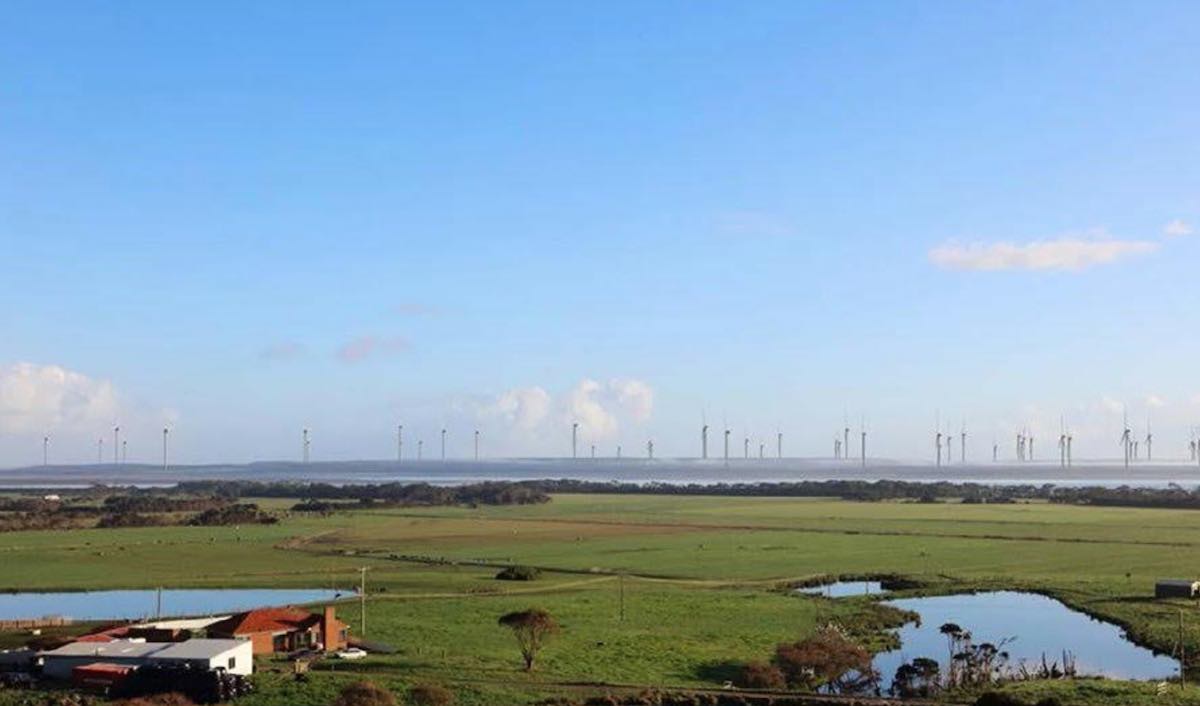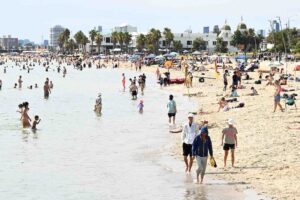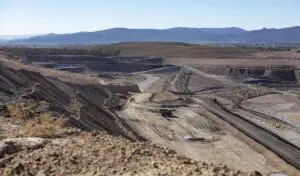Federal environment minister Tanya Plibersek has again delayed a decision on one of the most contentious wind projects put before her – the proposed 900 megawatt (MW) Robbins Island project proposed off the coast of north west Tasmania.
The decision comes as a legal battle over the Robbins Island wind project, put forward by Acen Renewables, on the island of the same name, is set to drag into the new year and as the state government is accused of trying to retrospectively change the law.
Robbins Island is one of the most contested projects in the country, earning the ire of locals and environmentalists, including former Greens leader Bob Brown, because of potential impacts on migratory birds and the path of its proposed transmission link.
It has been subject to numerous legal and court battles, and the project has already been downsized – both in number and size of turbines – but remains the biggest proposed in the state.
In 2022, the EPA approved the project – but on the condition the developers agreed to shut down its 100 turbines for five months every year during the migration period of the orange-bellied parrot.
That decision was overturned, however, after Acen successfully appealed to the Tasmanian Civil Administrative Tribunal. But the EPA has since launched its own appeal and that case is still before the state Supreme Court.
The EPA is arguing that the tribunal failed to consider the State Coastal Policy when allowing the construction of a wharf and access through sensitive dunes on the east of the island.
A counter appeal against the TasCAT decision has also been lodged with the Supreme Court by the community-based Circular Head Coastal Awareness Network.
However, the hearing, which was due to start in November, has now been deferred to the new year because the judge has ruled himself out over a potential conflict of interest.
On Wednesday, a day after announcing controversial approval for three huge coal projects – to the dismay of environmentalists and climate campaigners – Plibersek’s department said the timeframe for a decision under the Environment Protection and Biodiversity Conservation Act had been “further extended” to December 9.
No reason was provided. A decision had been scheduled for September 25, and this is third delay after previous deferrals in 2022 and 2023.
The project was first referred to the federal government under the EPBC Act in 2017, with a variation accepted in 2019. Given the uncertainty of the court appeal, it may have to be delayed again.
The Tasmanian state Liberal government has already voiced its frustrations over the delays and court action, and this month has sought to amend the law at the heart of the dispute, the State Coastal Policy Bill, that the state Greens say is designed mostly to facilitate approvals for the wharf on Robbins Island to service the wind farm.
They accuse the government of effectively trying to retrospectively change the law to allow the wharf at the centre of the legal dispute to proceed.
“This is about the Robbins Island wind farm project,” state Greens MP Cass O’Connor told parliament this week.
“The Circular Head council failed to take into account the State Coastal Policy, and TASCAT upheld the Circular Head council’s failure.
“The matter is now before the Supreme Court, with two separate groups joining that action. I think we should not allow ourselves to be duped by government into supporting this legislation without fully examining the rationale behind it.”
The law passed the lower house of parliament with the minority Liberal government getting the support of Labor, but it still must get through the upper house. That debate has been delayed until the end of October.
Acen Renewables, which also operates what will be the country’s biggest solar farm, the 720 MW New England project in NSW, and is building a neighbouring battery, says Robbins Island has excellent wind resources and the project will not interfere with its main activity, cattle grazing.
The project had hoped to tap into the Marinus Link, the new sub sea cable that will link Tasmania to the mainland, but since that project has been downsized to a single cable questions have been raised by opponents about its financial viability. Acen, however, appears undeterred by those changes.
The project was first unveiled in 2017, when Acen described it as having some of the best wind resources in the world. Brown took a public stand against it in 2019, arguing that the benefits were outweighed by its impacts on scenery and bird life, including the orange-bellied parrot, sea eagles and wedge-tailed eagles.










